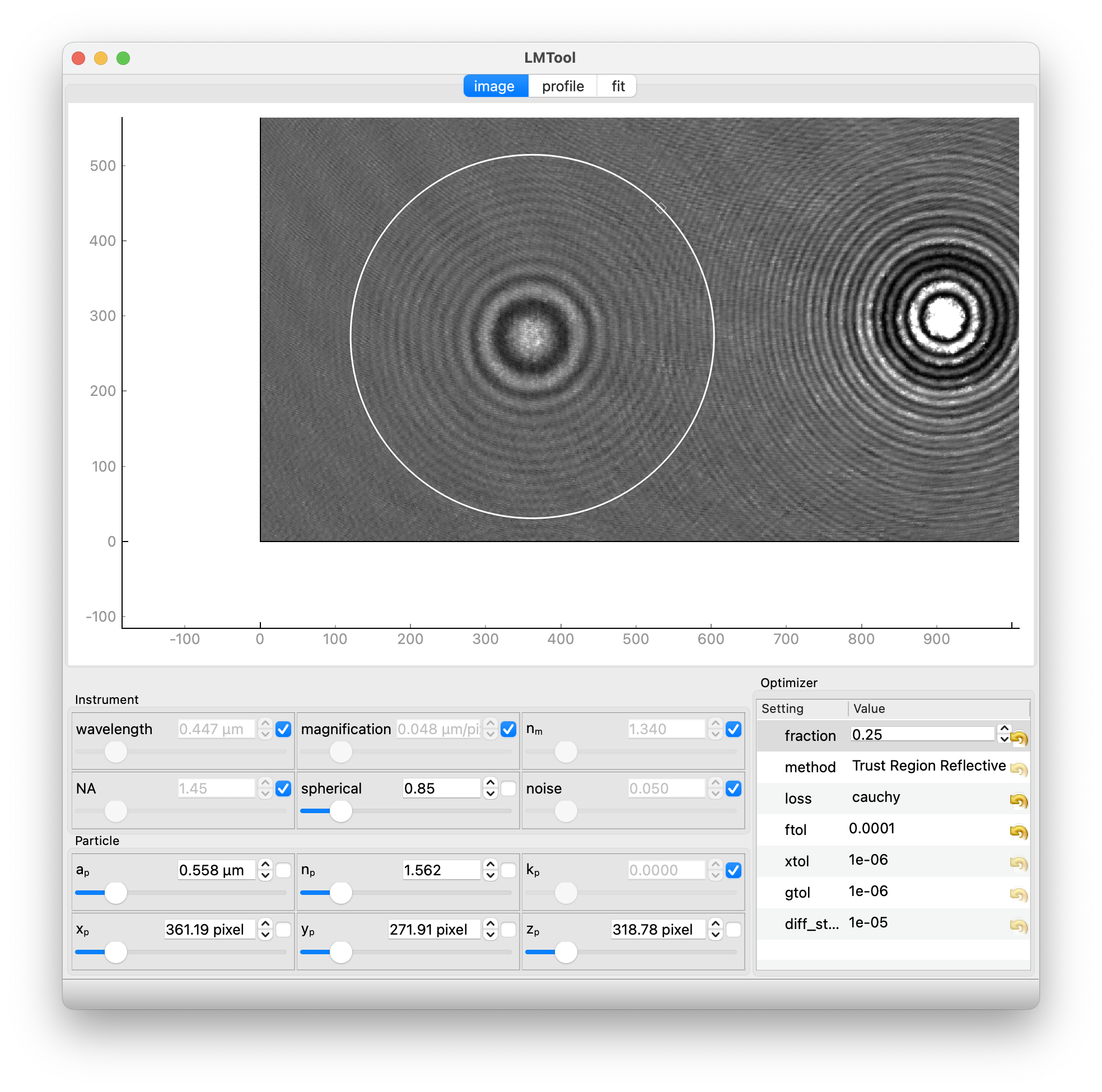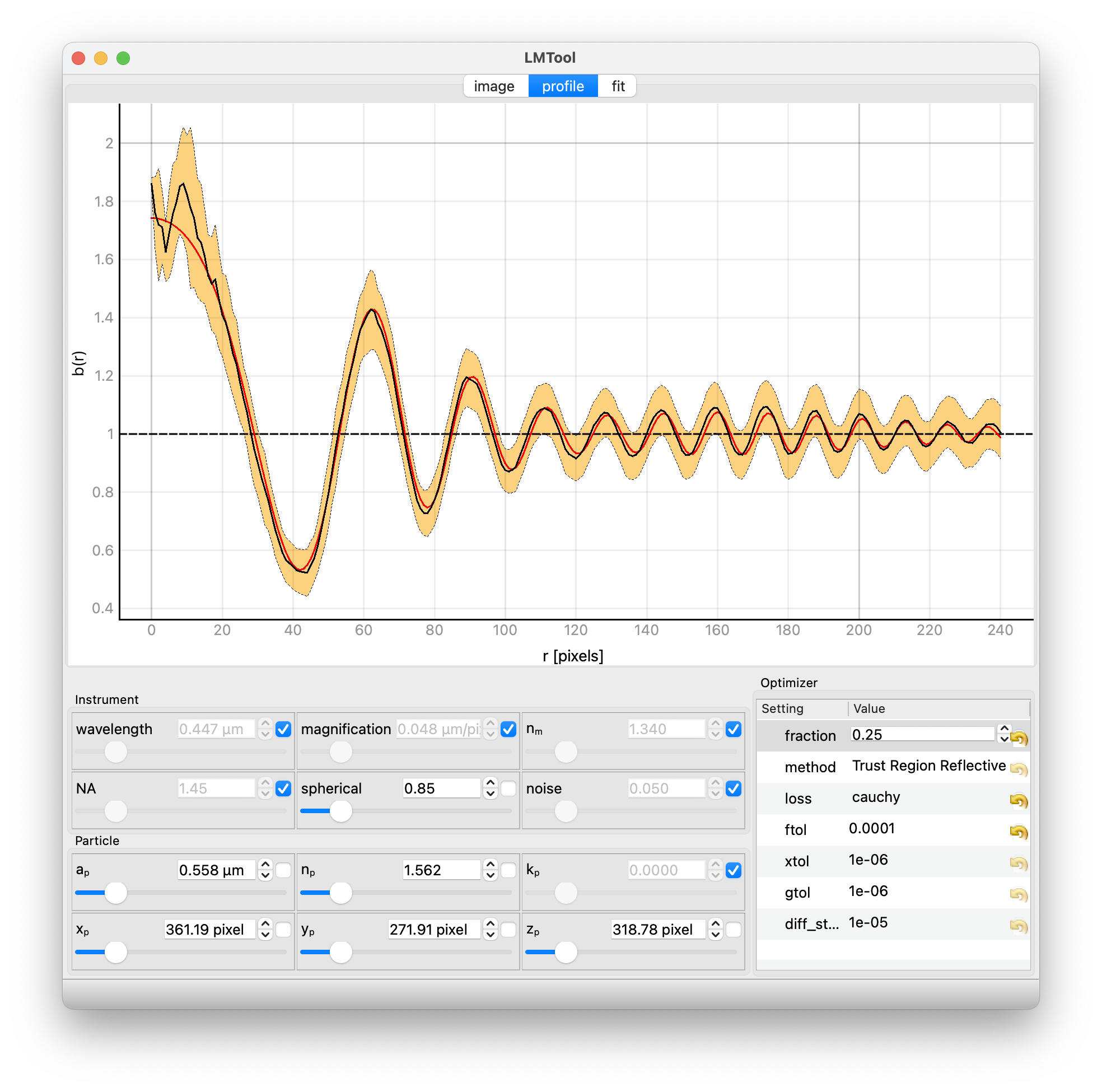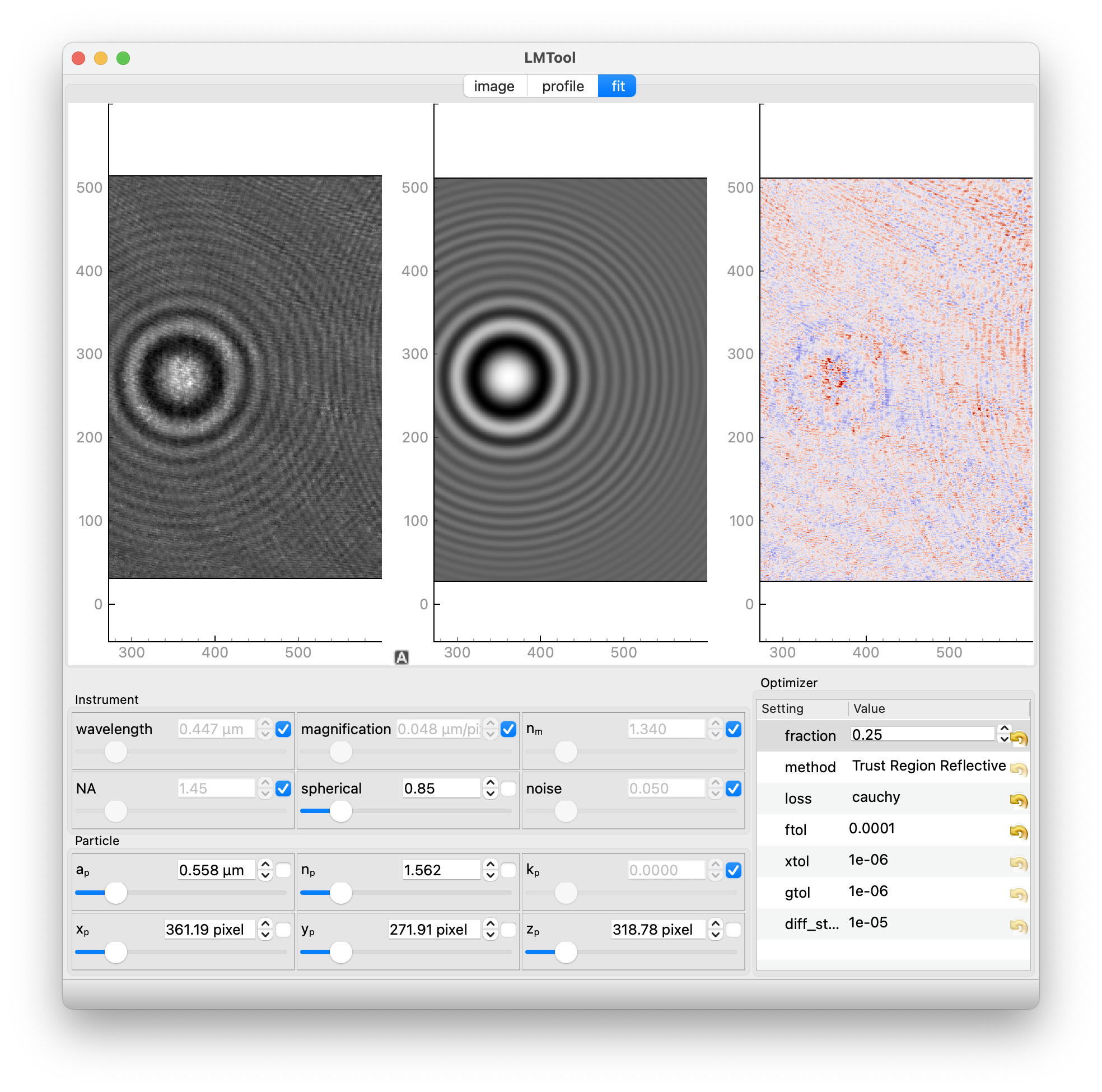Python routines for tracking and characterizing colloidal particles with in-line holographic video microscopy (HVM)
pylorenzmie provides a set of python classes for interacting with and
analyzing holographic microscopy data. The hologram of a colloidal
particle encodes comprehensive information about the particle's size,
composition, and location in three dimensions. This package extracts
that information by fitting a recorded hologram to a generative model
based on the Lorenz-Mie theory of light scattering.
pylorenzmie includes a GUI application called LMTool.py
for interacting with experimentally recorded holograms.
David G. Grier (New York University), Lauren Altman, Fook Chiong Cheong, Mark D. Hannel, Sanghyuk Lee, Michael O'Brien, Kaitlynn Snyder, Jackie Sustiel
- S.-H. Lee, Y. Roichman, G.-R. Yi, S.-H. Kim, S.-M. Yang, A. van Blaaderen, P. van Oostrum and D. G. Grier, "Characterizing and tracking single colloidal particles with video holographic microscopy," Optics Express 15, 18275-18282 (2007).
- C. F. Bohren and D. R. Huffman, Absorption and Scattering of Light by Small Particles (Wiley 1983).
- M. I. Mishchenko, L. D. Travis and A. A. Lacis, Scattering Absorption and Emission of Light by Small Particles (Cambridge University Press, 2002).
- G. Gouesbet and G. Gréhan, Generalized Lorenz-Mie Theories (Springer, 2011).
- W. Yang, "Improved recurstive algorithm for light scattering by a multilayered sphere," Applied Optics 42, 1710--1720 (2003).
- O. Pena and U. Pal, "Scattering of electromagnetic radiation by a multilayered sphere," Computer Physics Communications 180, 2348-2354 (2009).
- W. J. Wiscombe, "Improved Mie scattering algorithms," Applied Optics 19, 1505-1509 (1980).
- A. A. R. Neves and D. Pisignano, "Effect of finite terms on the truncation error of Mie series," Optics Letters 37, 2481-2420 (2012).



